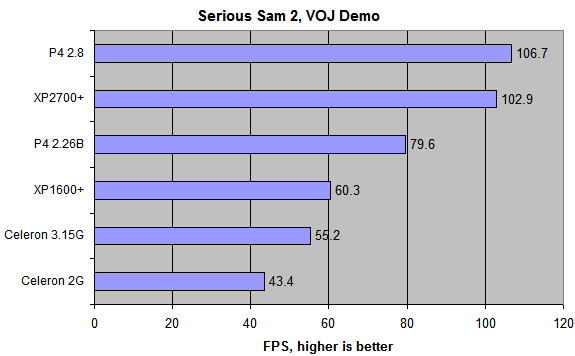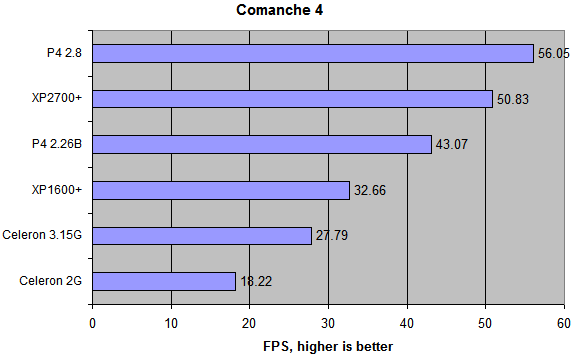Benchmarks II
On to gaming now and 3DMark 2001SE. Run at its default resolution of 1024x768x32. Remember, we're using a Radeon 9700 Pro as our AGP card.

Gaming, by its very nature, usually uses a portion of code that applied repeatedly over a large set of data. So, if you can hold the code in the super-fast L2 cache, or hold a large chunk of it, performance will be enhanced. Have a smaller cache and you will need to load the repeating code up each time from main system memory. That's why the Celeron is so far behind the 2.26GHz Pentium 4 featuring 512kb of cache.
The increase in scores between the Celeron at 2GHz and at 3.15GHz is impressive to say the least. System memory is running at 210MHz thereby offsetting some of the disadvantages of running a low level of L2 cache.
Next, on to the system-taxing Serious Sam: The Second Encounter. Benchmarking the Valley of the Jaguar Timedemo from the demo version. 1024x768x32, normal settings.

I've chosen this timedemo because it stresses the subsystem to the greatest degree. The level of geometry involved puts the onus on the CPU and memory rather than the graphics card (assuming it's a top-end card). The Celeron simply cannot push data quickly enough at either speed for the cache reasons discussed above. I'm a little surprised at the lack of gain when raising clock speeds by 57%.
On to another geometry-filled benchmark in Comanche 4. Benched at 1024x768x32, too.

The Celeron comes unstuck in a big way with this benchmark. The lack of L2 cache is really hurting it in games.









